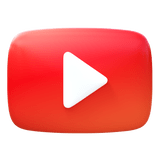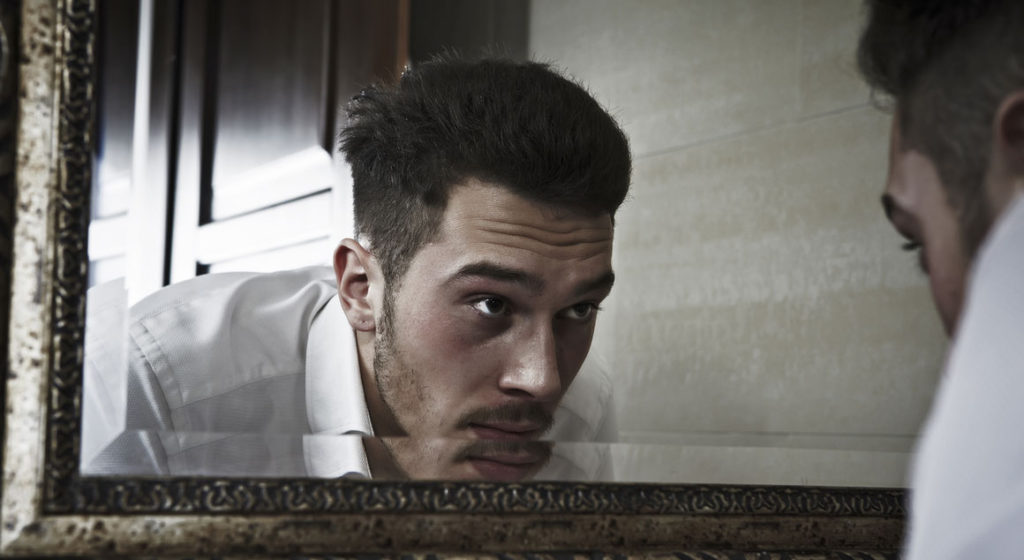
Treatments To Stop or Prevent Hair Loss
Thinning hair and hair loss often damage our confidence and self-esteem but the hair loss treatments at Skinspirations in Clearwater, FL, can help you get thicker hair.
Causes of Hair Loss
Most hair thinning has been shown to be caused by a combination of hormones & genetics although it can also be caused by medical disorders, stress, nutritional deficiencies, and many medications.
Hormones and Hair Loss
Hereditary hair loss with aging, also known as androgenetic alopecia, is the most common cause of thinning hair or baldness in both men and women. Nearly 85% of men experience hair thinning by the age of 50 and about 40% of women by the age of 40. Androgens, including dihydrotestosterone (DHT) and thyroid hormones are linked to hair thinning especially in individuals with a genetically predisposed sensitivity.
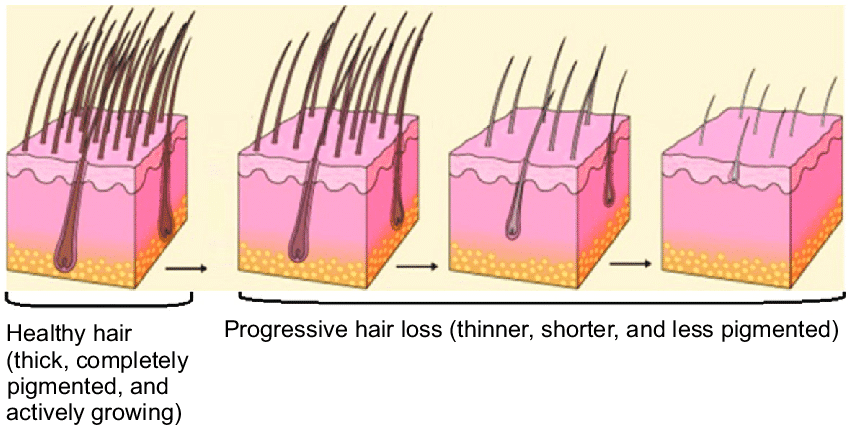
Each hair follicle seems to function as an individual, with its own growth cycle timing. For unknown reasons, some of the scalp follicles become more sensitive to the effects of hormones with aging, especially dihydrotestosterone, or DHT, a byproduct of testosterone. DHT causes the growth phase of the hair to shorten and the follicles to shrink until they no longer produce hair.
Research is revealing how important the integrity of the skin layers, circulation, hair follicles, and surrounding fatty tissue in the scalp is for normal hair growth. A simple analogy is that the scalp is the topsoil and the thicker the topsoil, the better the grass will grow.
Hair Loss Patterns
Men tend to lose hair from the temples, in front of their forehead, and the top of their heads. Women usually experience thinning mostly across the top of their scalp, usually noticed first as a widening part. Ironically, women also tend to notice brow hairs becoming sparser as lower face hairs (“boar bristles”) sprout more.
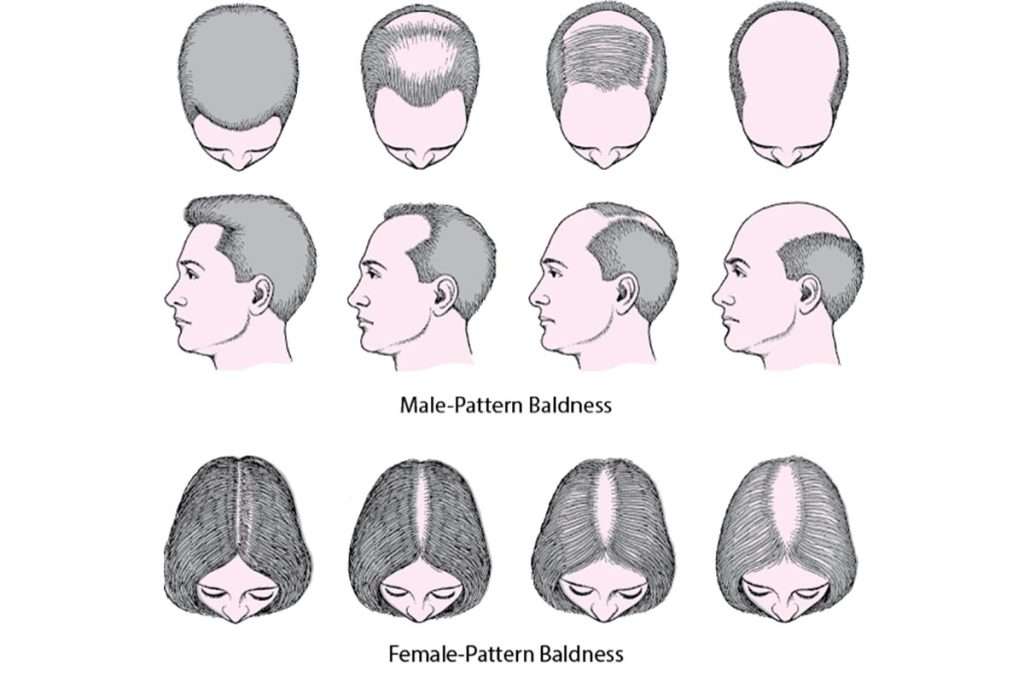
Hair Loss Treatments
Until recently, the only effective treatments for hair thinning were hair transplants and drugs such as minoxidil, finasteride and spironolactone. Newer regenerative treatment options with platelet-rich plasma or nanofat, use the healing and growth factors made by your own body to stimulate hair growth.
All of these treatments can be compared to the fertilizer part of the above analogy, as they are thought to increase hair growth by stimulating growth factors in the scalp. Regenerative hair therapies are not effective if the area being treated has no remaining hair follicles, so it’s best to start early. Since it takes a minimum of four months for new hair to grow, don’t expect to see results for at least six months.
Alopecia areata is an autoimmune-related disease that causes patchy bald areas, and some studies have also shown improvement in the condition with these treatments.
Platelet Rich Plasma (PRP) treatments can improve both hair density and thickness, especially when a series of treatments are done.
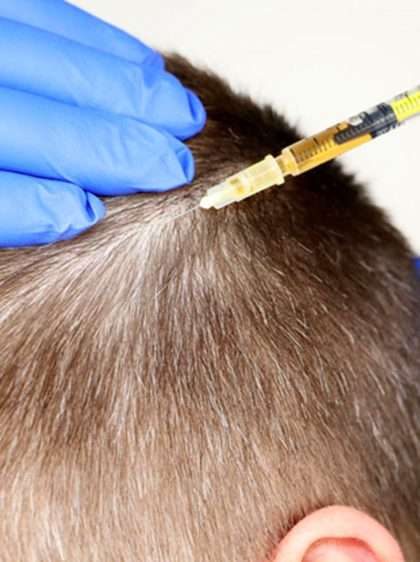
Platelets are cells in our blood that are rich in many types of signaling and growth factors and PRP is the liquid portion of the blood in which the platelets have been concentrated and the other blood cells removed. The effects of PRP on hair loss are thought to be due to the effects of the platelet growth factors on the hair follicles.
PRP is obtained by drawing a small blood sample & then spinning the tubes to separate and concentrate the platelets. The solution is then either applied to the scalp during a Microneedling treatment or injected through tiny needles into the scalp or brows where hair thickening is desired.
In general, after an initial series of 3 bi-monthly PRP treatments, roughly 30% of patients will see an increase in hair growth, 30% won’t see an increase but they won’t continue to experience hair loss in the months after treatment, and 30% won’t see any change. Like other hair loss treatments, results may not be seen for up to six months.
Better results are seen when topical or oral minoxidil are used in addition to the series of PRP treatments.
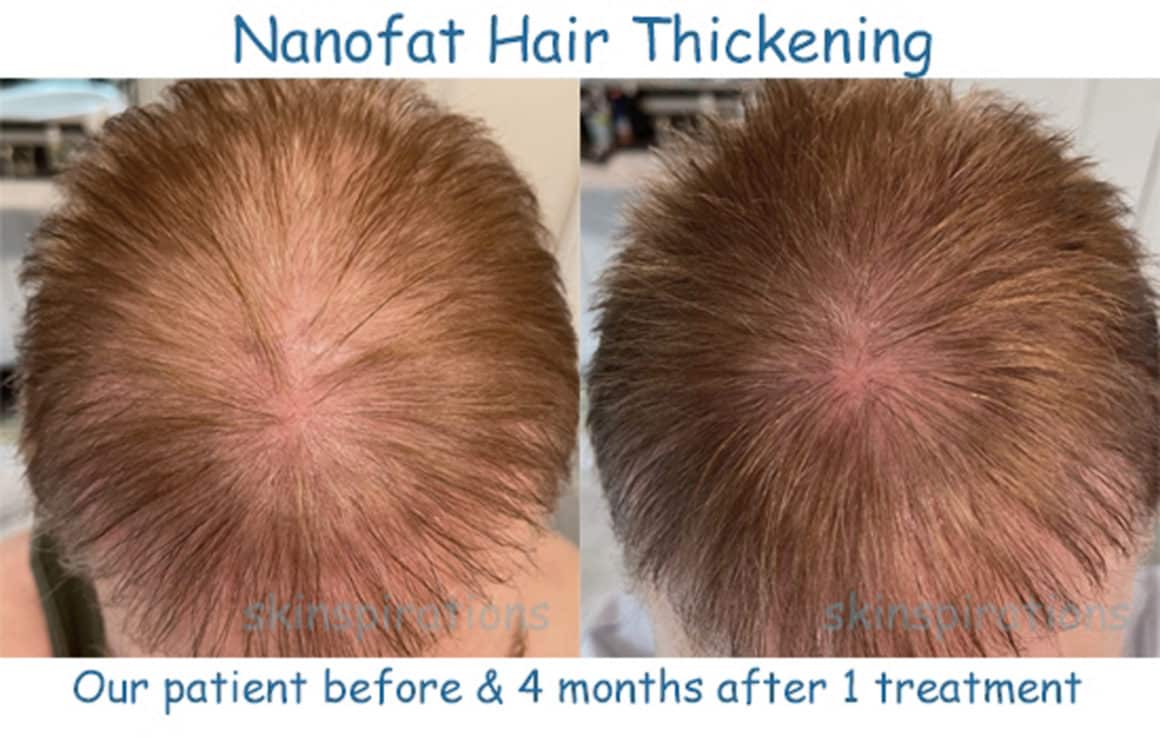
Nanofat is the product obtained from the mechanical breakdown of fat. When fat cells are broken up they release large amounts of growth factors and stem cells that can be injected through finer needles than those used for fat injections. Results from nanofat injections to the scalp usually appear about six months after the treatment and usually, only one treatment is needed. Results may last up to a few years with maintanence treatments performed as desired.
To obtain nanofat, a mini-liposuction treatment is performed to obtain a small amount of fat. That fat is then washed and broken up and the growth factor solution is filtered into small syringes. After topical anesthetic to the scalp, it is injected through tiny needles into the area where hair growth is desired.
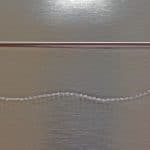
Absorbable Threads made of the same material as buried sutures, when placed under the skin’s surface, stimulate healing and growth factors, as well as new blood vessels. Depending on the material the thread is made of, results can last nine months or two years. Encouraging results have been seen with hair growth when these threads have been used in areas of thinning hair.
They also provide a solid matrix to slow down the absorption of PRP so combining PRP with a scalp thread treatment can improve the results.
What to expect with a hair loss treatment
The scalp is not a sensitive area so topical anesthetic or vibration therapy are usually adequate to make the treatment tolerable. Nitous oxide gas is also available if you desire. Occasionally there is some swelling of the treated area the day after the treatment but most people find they can immediately return to their usual activities.
Maintenance treatments as needed are recommended for all of these treatments to maintain results.
The fees at Skinspirations for regenerative hair loss treatments are:
Thread treatment for hair thickening: $500
Nanofat treatment: $1800
PRP hair treatment, discounted package of 3 sessions: $1,148
Call us at 727-571-1923 or make an appointment here for a complimentary consultation to learn if this procedure is right for you!



